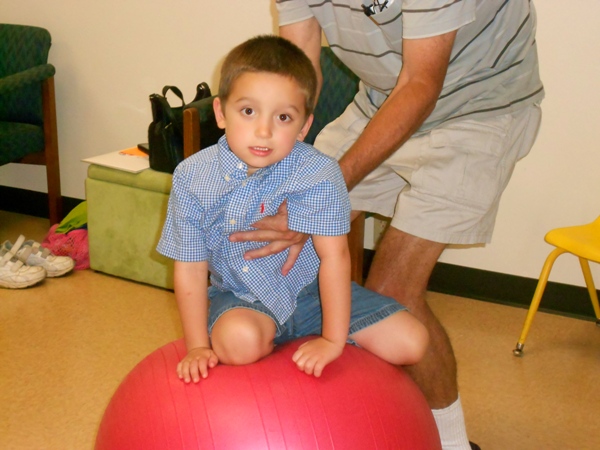Sensory processing disorder (SPD) can make participation in life activities—what occupational therapists refer to as occupations—very difficult. Luckily, there are options and strategies to help improve sensory processing and make life much smoother and more enjoyable.
Sensory-based occupational therapy (OT), may look like play to adults, but to the child it is their work and necessary for improving overall abilities to process sensory information more appropriately. Jumping, swinging, climbing and playing in multisensory mediums—such as shaving cream, beans, rice, or play dough—all have a place in their growth and the development of sensory processing abilities.
As the child plays and learns more about their body and how to use it through treatment for sensory processing disorder, their brain improves its ability to process sensory information more efficiently. These children are then able to handle situations more appropriately and participate in everyday activities including self-care, fine motor and social skills.
This process can take months for long lasting effects, but parents often see a difference after the first few visits.
Occupational therapists that specialize in SPD and autism are especially adept at helping individuals on the spectrum succeed. These therapists are skilled in testing and providing treatment, compiling strategies to modify the environment, developing home programs, and giving suggestions to schools and vocational programs to improve participation in life’s activities.
When looking for an occupational therapist, it is important they have advanced training in sensory integration or SPD and, if possible, are SIPT (Sensory Integration and Praxis Test) certified.
Though occupational therapy services may be provided in a variety of settings—including home and school—the clinical setting is much more conducive to treating SPD and the underlying causes of the child’s difficulties. This is because a clinic will have specific equipment designed to promote engagement in therapy and develop skills necessary to overcome sensory difficulties.
You also want to make sure they have an OT gym that is well equipped to treat SPD. A phone call and an interview with the therapist may be beneficial.
Find a SIPT Certified Therapist
by Dr. Gayla A. Aguilar, OTR, OTD
Does your child have a sensory processing disorder? How does your occupational therapist help?
Providing the weekly Medical Blogs are the team of professionals, doctors, occupational and behavioral therapists at San Antonio’s premiere Autism Diagnostic Clinic, the Autism Community Network.
Contributors include:
Executive Director Dr. Loree Primeau
Medical Director Dr. A Patricia Del Angel
Training and Research Director Dr. Berenice de la Cruz
Carrie Alvarado, OTR, PhD©, DIR/Floortime-Certified
Lupe Castaneda, MS, BCBA
Adriana Sanchez, MA, BCBA
Dr. Gayla Aguilar, OTR, OTD, C-SIPT
Megan Kunze, MA, BCBA
The ACN teams works to maximize the potential of children with autism through their administrative, clinic, training and development departments. Their expertise on Aspergers Syndrome is offered to you through aspergers101.com.



My 10 year old son was diagnosed with high functioning Autism through testing done at his school. I would like to seek further testing, but do not know where to start or where to go. At this time, my son is seeing Dr. Claudio Cepeda and he agrees with school district that he has symptoms of Aspergers, even though he did not assess him. Dr. Cepeda is currently working with my son because he made a suicide outcry at school. I would like to see other options as far as doctors go. I am not happy with who we are seeing at the moment. I would also like assistance in finding a therapist who can assist my son with coping skills. It is the lack of these skills that cause my son to have meltdowns. Thank you.
Yes, sensory-based occupational therapy (OT) can take a place besides behavioral interventions and medications. There is also one more therapy to treat autism and that one is HBOT (Hyperbaric Oxygen Therapy).
OxyHealth designs different hyperbaric chambers with flash through system and portable facility to fight back autism. The supplied 100% pure oxygen at higher atmospheric pressure can enhance the nurve impulses of autistic brain to tend the autistic children normal